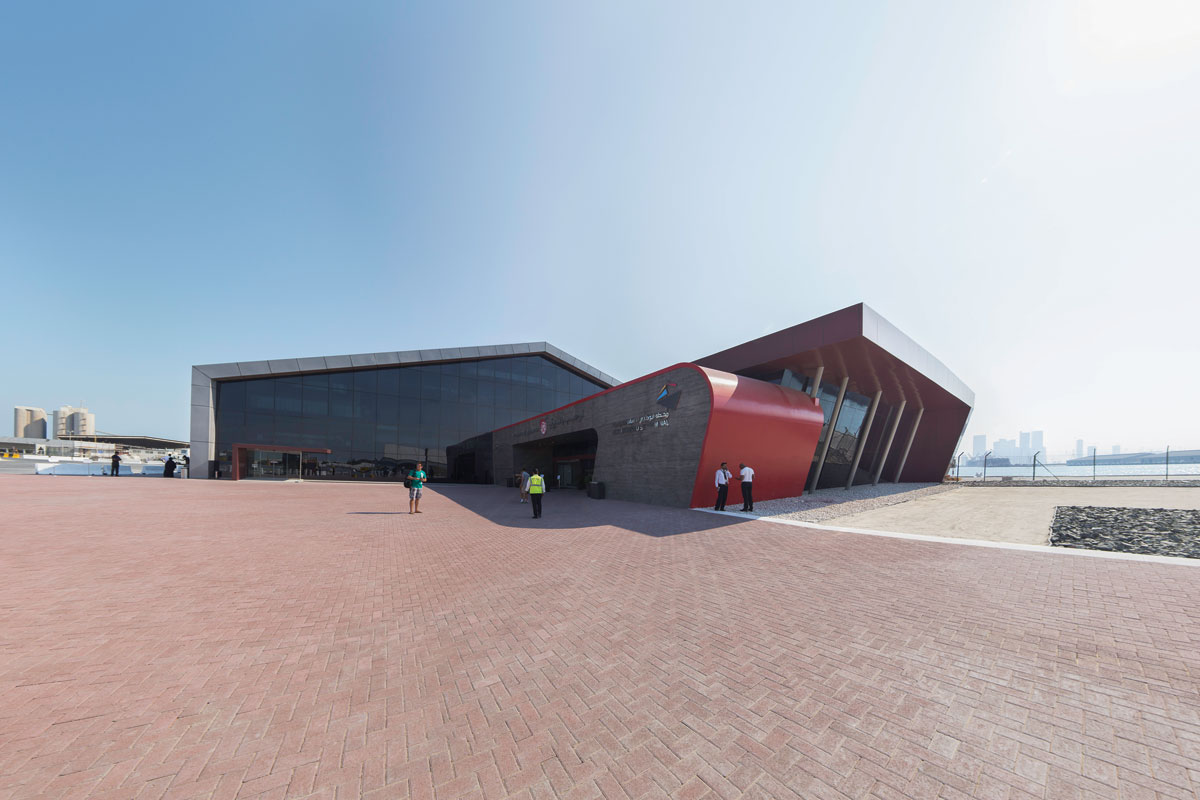#{Title}
#{Copy}
Firas is design director in our Abu Dhabi studio. He has great experience of leading a range of mixed-use, high-end residential and high-rise projects throughout the UK, Europe, and the Middle East. Here he explores his latest project, the design of the landmark passenger cruise terminal at Port Zayed in Abu Dhabi, and how it fulfills the needs of a flourishing passenger ship industry in the area.
Cruise ships coined sea travel as the ultimate in luxury and display of status.
FIRAS HNOOSH
Everyone likes to go on vacation, right? Although people had travelled for centuries by sea, the passenger ship industry only flourished in the late 1800s and early 1900s, courtesy of the steam engine.
Cruise ships coined sea travel as the ultimate in luxury and display of status.. Until the airplane arrived that is, when people could travel to more destinations in a fraction of the time it took with an ocean liner.
The 1960s witnessed a comeback of the cruise industry. Modern cruises were no longer competing with airplanes. Quite the opposite, they offered a different pace to explore the world from a different vantage point. Cruise terminals were developed as gateways to receive touring passengers and promote their cities. The modern cruise terminal was born.
Capitalizing on the Emirate’s sunny beaches and growing landmarks, the government of Abu Dhabi embarked on an ambitious venture to make Abu Dhabi a cruise holiday hub. Travellers from all over the world would fly into Abu Dhabi and board a cruise ship that could take them either across the Middle East to Europe and North Africa or to the Far East and Australia. A competition was launched and in 2014, BDP won the commission to design and deliver the Emirate’s first permanent cruise terminal.

As Abu Dhabi and the UAE’s new gateway, the terminal has to be capable of handling in excess of 4,000 passengers per day and occasionally two ships simultaneously. Security, immigration, baggage handling and transportation to and from the terminal all had to be thoroughly considered in the design whilst ensuring the space spoke of Abu Dhabi, its history and hospitality. Our solution was to repurpose one of the existing sheds on Zayed Port, strip it completely except for its steel structure and create a grand open space in the heart of the building allowing direct visual connection between the interior, the sea and the cruise ship. That space, reminiscent of the grand ticketing halls of the great train stations of New York and London, handles people arriving, departing, checking-in and transiting.
 Evoking Abu Dhabi’s maritime spirit, check-in and information desks line up like traditional dhows in a marina with their bows projecting a welcome to passengers. The hall’s glazed roof is shaded with a screen pattern inspired by the native ghaf—a tree which holds a special place in the hearts of the Emirati people whose desert travellers rest under the shade of its branches.
Evoking Abu Dhabi’s maritime spirit, check-in and information desks line up like traditional dhows in a marina with their bows projecting a welcome to passengers. The hall’s glazed roof is shaded with a screen pattern inspired by the native ghaf—a tree which holds a special place in the hearts of the Emirati people whose desert travellers rest under the shade of its branches.
Upstairs, passengers enjoy a selection of shops and restaurants with a panoramic view across the main hall toward the Louvre Museum on Saadiyat Island. Projecting from the side of the building, a new volume defines the main entrance.
 With a cladding the colour of rusted iron, it hints at the ship building industry and has three conic skylights mimicking a ship’s chimneys.
With a cladding the colour of rusted iron, it hints at the ship building industry and has three conic skylights mimicking a ship’s chimneys.
As the sun sets and another ship leaves the terminal, the building changes its skin. The glazed roof glows from within, beaconing the next ship to find its way.